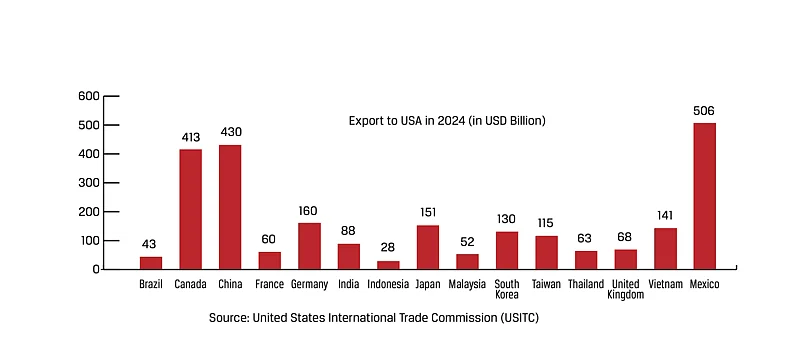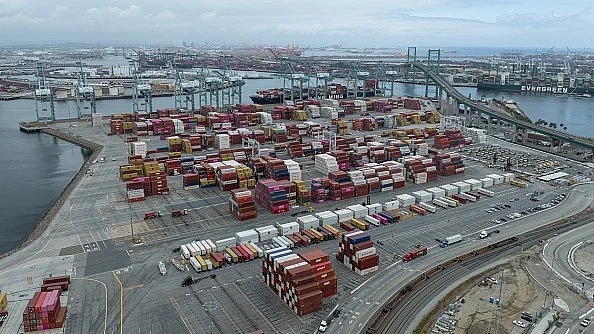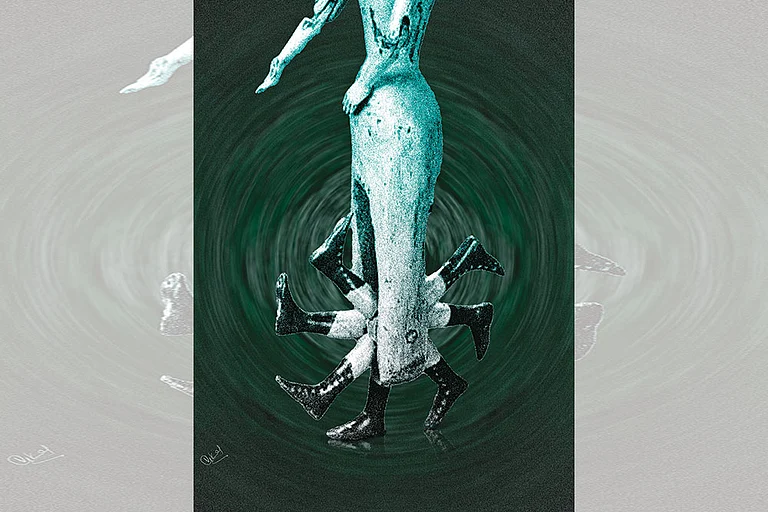The Rise and Limits of Free Trade
Trump라이브 바카라 attempts to impose tariff barriers on China allude less towards economic rivalries and more towards the emerging trajectories of the new world order The Political and economic landscape of thepost-World War II era has been characterised and shaped by the emergence of varied global bodies such as the United Nations (UN), the International Monetary Fund (IMF) and theGeneral Agreement on Tariffs and Trade (GATT), which eventually culminated in the setting up of the World Trade Organization (WTO) in 1995. The Global South, plundered as it was during the colonial period, attempted to erect tariff walls after gaining independence with the aim of promoting homegrown industrialisation. But its attempts were rebuffed by the Global North using multilateral forums to prise open its markets to exports from the Global North. Thus, though nominally independent, the countries of the ‘non-west’ became subject to the vagaries of a new and insidious form of exploitation, later identified as neo-colonialism.
However, the push for the neo-liberal policy of free trade, pursued by the Global North since the 1990s, had unintended consequences—namely, the relocation of manufacturing to the Global South to take advantage of low wages. This led to a shift in exports from the Global North to the Global South and also meant employment moving out of the Global North to the Global South—especially from the US to not only nearby countries, but also to China, Vietnam and other Asian countries. This dramatic shift in employment, by its own Machiavellian logic, also reinforced its finance-capitalism based profit equation. This neo-liberal policy of free trade, therefore, also made the US run trade deficits with most of the trade partner countries.

This indeed served the US well, as with the help of the trade deficit, it was able to maintain its global leadership role and accommodate the needs and demands of other countries. As long as the impact of the trade deficit remained manageable and did not impact domestic US politics, it remained a low-key policy issue in its global trade framework. However, Donald Trump라이브 바카라 return as president on the slogan of ‘Make America Great Again’ and the promise of bringing manufacturing back to the US have changed the entire logic of its much-hyped neo-liberal market economy façade.

Trump라이브 바카라 Break from Soft Power: NATO, USAID, and the Weaponisation of Tariffs
Since assuming power, Trump has unleashed a series of announcements, which has, in many ways, taken even the Global North by surprise. Firstly, his position on the North Atlantic Treaty Organization (NATO)—that if NATO countries do not pay, the US is not going to defend them.
This has sent shockwaves among the European nations. Secondly, the withdrawal of the US from the World Health Organization—where it was the single-largest financial contributor—has further dented its global image. Thirdly, the reorganisation of the U. S. Agency for International Development (USAID) and the discontinuation of most of its functions do not align with the USA라이브 바카라 priorities. This means virtually shutting USAID, which had been the US vehicle to assist countries undergoing humanitarian crises, support marginalised groups, and monitor democratic consolidation in recently-formed democracies. Fourthly, by imposing tariff barriers, the US stands to lose its status as the most liberal as well as the largest market in the world.While NATO, besides many other channels, was useful for the US in maintaining its political leadership over the Global North, USAID and its membership of WHO helped the US to exercise soft power over the Global South. Running a high trade deficit helped it remain a global leader, both in the eyes of the Global North as well as in the Global South. However,Trump believes that the world has taken advantage of the
USA라이브 바카라 generosity for far too long and it is time to put the house in order. His own position appears to go beyond the earlier US doctrine of using a combination of hard and soft power. As the chickens of neo-liberal policy come home to roost, the deeper contradictions of capitalist development are becoming evident. Driven by US-centric international finance capital, the decline in US manufacturing is an outcome of chasing profitability in the era of rapid technological advancement, which, coupled with the global supply chain, has transformed modern manufacturing into global production networks spread across several countries. In an attempt to bring manufacturing back to the US, Trump also wants to keep the dollar globally dominant, but weakened to support US exporters; and cut taxes that will increase the budget deficit, but lower Treasury bond yields.
The Struggle to Rewrite the Global Order
Trump wants to achieve these seemingly contradictory objectives with the help of the Mar-a-Lago Accord. The Mar-a-Lago Accord was articulated by Stephen Miran, now chair of the White House라이브 바카라 council of economic advisors, in a research note in 2024. There are three key elements of this Accord—imposing tariffs on US imports, which is currently underway; blending trade sticks with defence carrots; and weakening the dollar, while keeping it globally dominant.
For this, the US would consider reducing tariffs if a trading partner country agreed to sell its US government bonds from its central bank reserves in exchange for its own currency. This would weaken the dollar and strengthen the local currency. The goal is to get several major countries to do this at once, similar to the Plaza Accord of 1985. Unlike the Plaza Accord, where five countries—the US, Japan, West Germany, France and the UK—agreed to collectively act to weaken the dollar, Mar-a-Lago is unlikely to get the cross-border coordination required to succeed, given China라이브 바카라 defiance so far. Unlike Germany and Japan of the 1980s, China has much more strategic independence in the current world economic order. Therefore, Trump라이브 바카라 attempt, on the one hand, is unlikely to resurrect US manufacturing, and on the other, it is likely to diminish both its hard and soft power.
This may lead to the emergence of a new world order as opposed to the one that has been in practice in the post-1945 era. It is in the aforementioned critical context that one needs to deconstruct the whole gamut of political and economic developments that have been emanating since Trump라이브 바카라 second term. Trump라이브 바카라 tariff regimes are more about the failure of the neo-liberal market economy and its global trade competitive algorithm—which can aptly be compared with the pre-1945 world of inter-imperial confrontations culminating into two World Wars—than about the dwindling US domestic economic graph. The pre-1945 world comprised a long turbulent period of fierce inter-imperial power struggles for more and more territorial aggrandisement to cater to their unending lust for raw material as well as global market space.
Like the emergence of the then new world order in the post-1945 global economic setup, built on the debris of the two world wars, the current complex global scenario, on the one hand, provides enough space to speculate about the emerging trajectories of a possible new world order impregnated with varied possibilities for the active involvement of the hitherto- neglected Global South, and on the other, there are serious implications for all those economies, which are currently embroiled in the ongoing tariff tug of war.
Some similarities can quickly be counted between the currently emerging global fault lines and the ones that had played havoc during the first half of the 20th century라이브 바카라 turbulent period that pushed the world into two world wars. If in the 1930s, Hitler wanted Germany to get rid of Jews, the Trump 2.0 regime intends to keep the US free from the shadows of suddenly-dubbed burdensome immigrants under its ultra-nationalist and protectionist moves. Like Pax Britannica (global hegemonic power), its pre-1945 global power-game predecessor, the whole gaze of the US has been fixed on maintaining its leading role in the globally competitive capitalist economy vis-à-vis China, Canada, Mexico, and the European Union (EU), its principal trade competitors with which it has been fiercely interlocked in the ongoing tariff warfare. Among the aforementioned competing economies, China has long been in a constant tug of trade war with the US for the last few years as a prominent stakeholder in the emerging contours of the ascendancy of the 21st century as an Asian century. Both of them have been competing with each other in order to establish their respective hold on multidimensional economic fronts in a geopolitically perforated chessboard of the current realist power-oriented world order.
Both of them have been sternly struggling to establish their singular hold over global trade through their respective economic power and currencies. In its eagerness to leave the US behind in the ongoing global economic power game, China has been attempting to replace the US dollar-led global market economy with the yuan for a while now, but with little success so far. Such moves, coupled with Trump라이브 바카라 frantic attempts to impose stringent tariff barriers on China, allude less towards economic rivalries and more towards the emerging trajectories of the new world order.
(Views expressed are personal)
Ronki Ram and Sunil Kumar Sinha are Professor Emeritus and Professor of Economics, respectively, with the Institute for Development and Communication, Chandigarh.

















